Calculating Economical
Visually Attractive Routes
C. Gretton & P. Kilby
Capacitated VRP with Time Windows
- Service a number of customers with a fleet of vehicles
- Minimise: (1) fleet size, and (2) total distance travelled
- Capacity constraints
- Time windows
Capacitated VRP with Time Windows
- Service a number of customers with a fleet of vehicles
- Minimise: (1) fleet size, and (2) total distance travelled
- Capacity constraints
- Vehicles have bounded capacity
- Customers each have a demand
- Time windows
Capacitated VRP with Time Windows
- Service a number of customers with a fleet of vehicles
- Minimise: (1) fleet size, and (2) total distance travelled
- Capacity constraints
- Time windows
- Customers must be serviced during specified intervals
Capacitated VRP with Time Windows
- Service a number of customers with a fleet of vehicles
- Minimise: (1) fleet size, and (2) total distance travelled
- Capacity constraints
- Time windows
- NP-Complete -- e.g., TSP is a subproblem
Capacitated VRP with Time Windows
- Service a number of customers with a fleet of vehicles
- Minimise: (1) fleet size, and (2) total distance travelled
- Industrial instances can only be solved approximately using metaheuristics: e.g. savings and insertion based
- We use a large-neighbourhood search (LNS)
- LNS naturally couples with other general constraints processing procedures
LNS -- Incumbent Solution
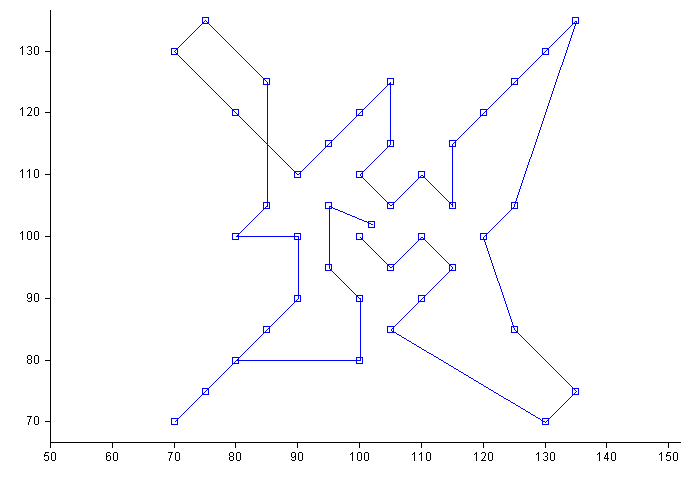
LNS -- Next, Visits are Removed
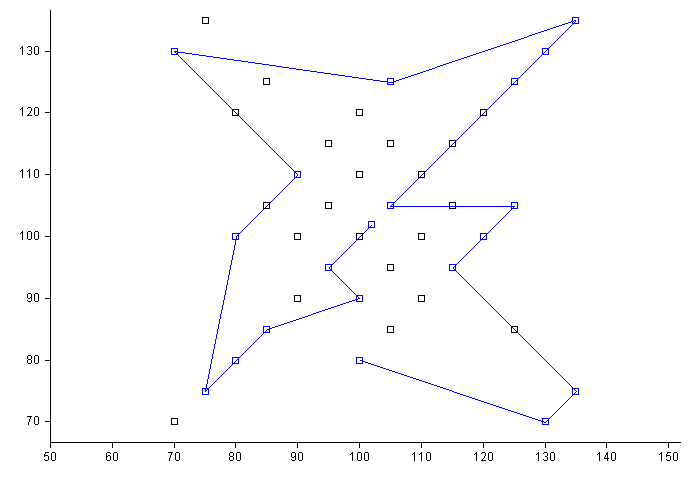
LNS -- Visits Inserted
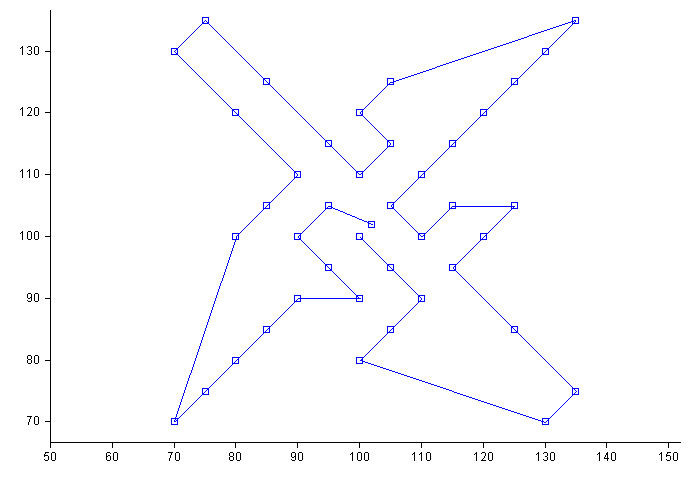
LNS -- Background
- Objective is to minimise a weighted sum of quantities:
- Classical: Distance, Time, Overtime, etc.
- Non-Classical: Dispatch-Time Penalty, Slack Penalties, Surplus Penalties, Visual Unattractiveness, etc.
- While satisfying all "hard" constraints:
- Vehicle cannot be overloaded
- Customer must be serviced according to time windows
- LNS: Customers are removed according to a removal rule
- LNS:Customers assigned according to an insertion rule
LNS -- Background
- Objective is to minimise a weighted sum of quantities
- While satisfying all "hard" constraints...
- LNS: Customers are removed according to a removal rule
- More-or-less greedy wrt customer contribution to a weighted fragment of the objective value of the incumbent (and ease of exchange)
- LNS: Customers assigned according to an insertion rule
- More-or-less greedy wrt regret scores -- Sum \(k=2..N\) of differences between objective values of best and \(k^{th}\) most promising insertion
Visually Attractive Routes
- LNS quickly produces short solutions
- Solutions are not robust
- And they are not visually attractive
- Long narrow tours are bad (cannot easily reschedule)
- Driver familiarity with all customers in their vicinity
- Difficult for human planners to reason about on-the-fly modifications to overlapping routes (e.g. callbacks)
Visually Attractive Routes
- Our clients cannot implement optimised routes
- They demand visually attractive routes
Example of Visual Attractiveness
| Routes | Route Hulls | |
| Not Robust | 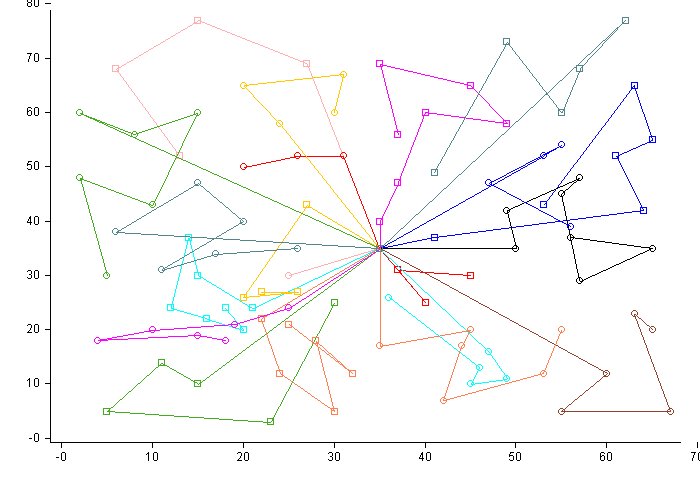 |
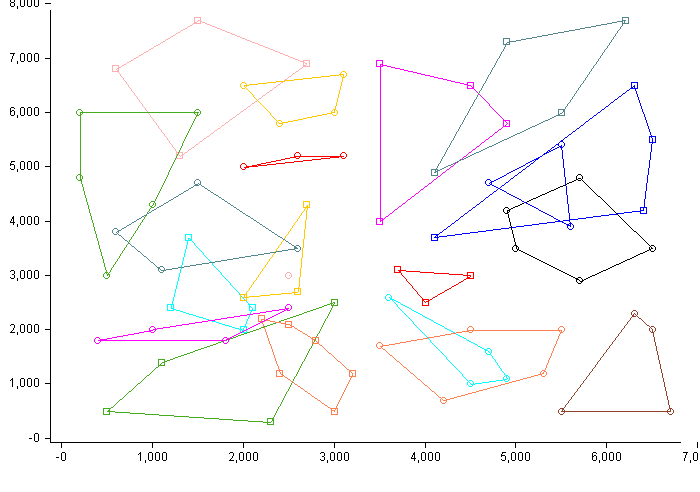 |
| Robust |  |
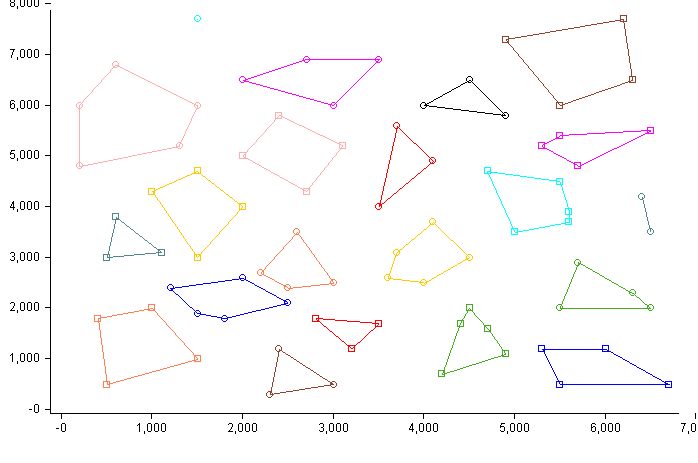 |
Sneak Peek
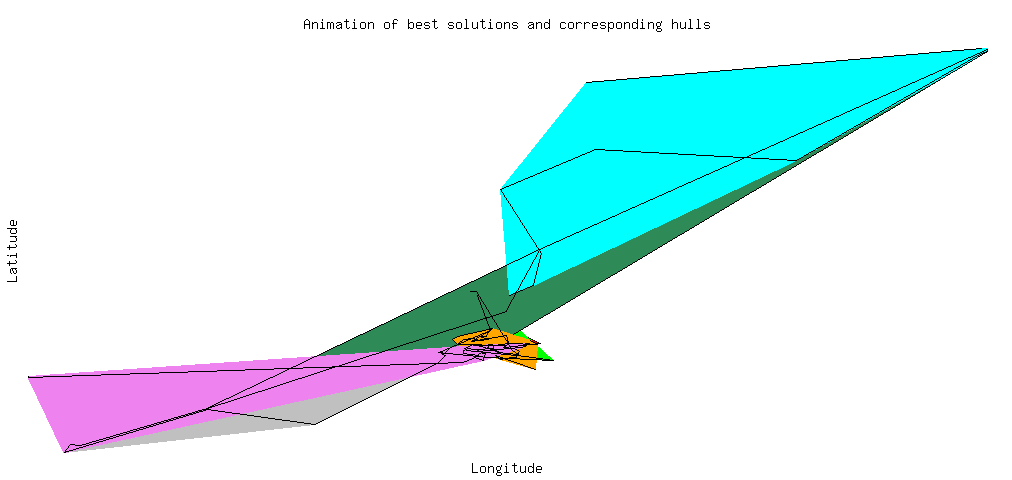
Sneak Peek
 |
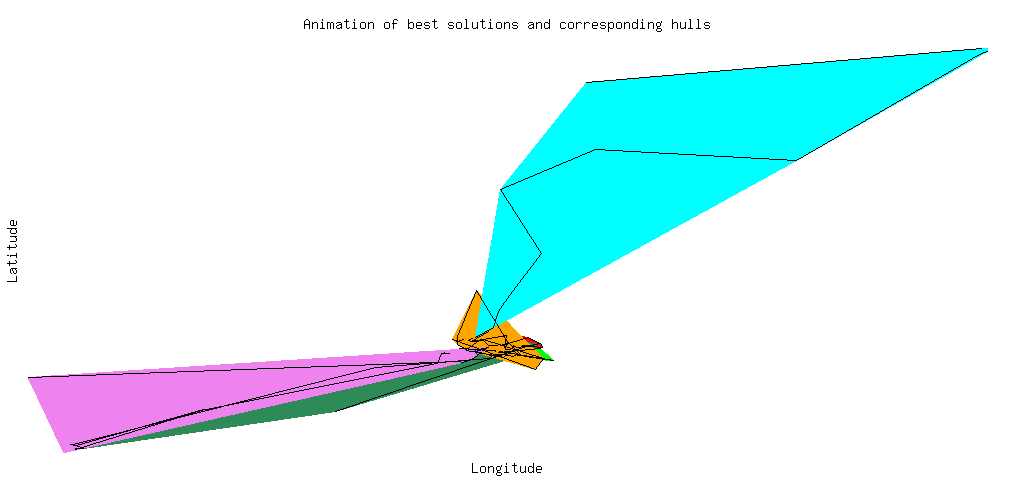 |
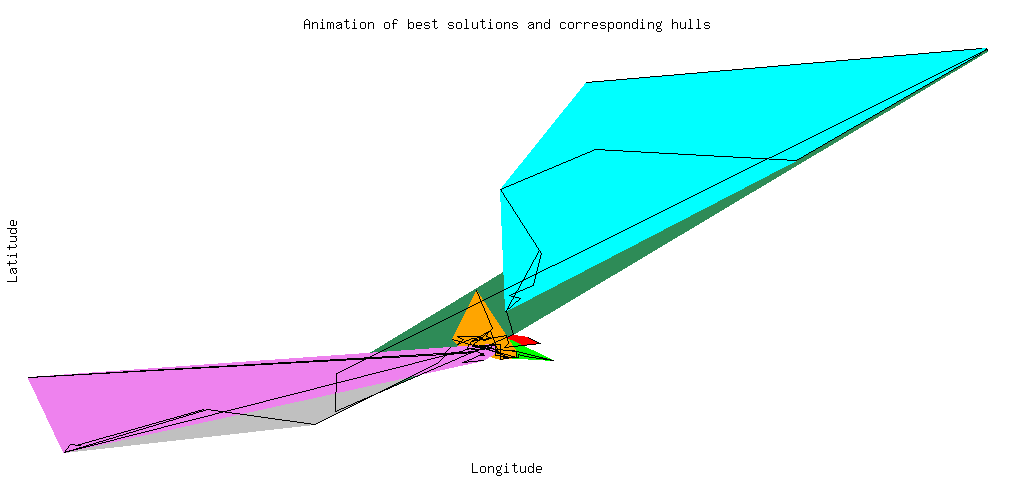 |
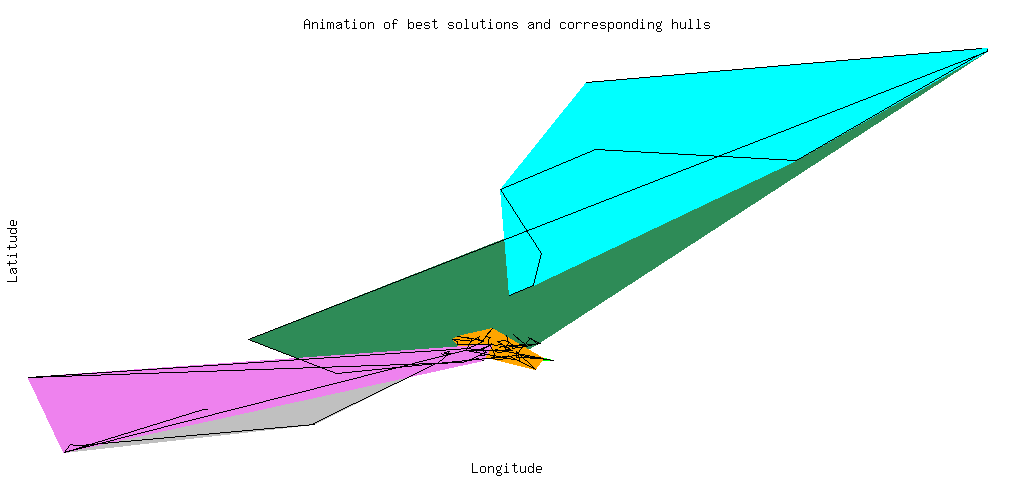 |
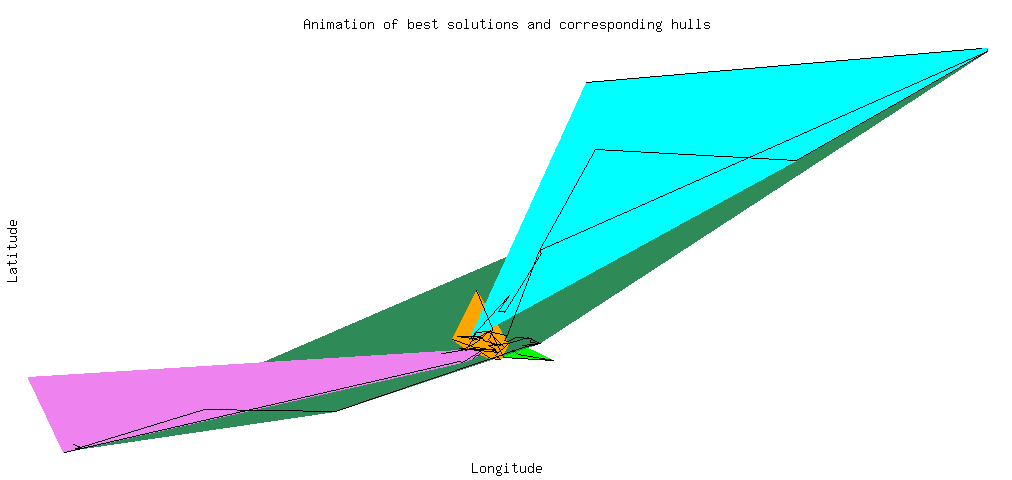 |
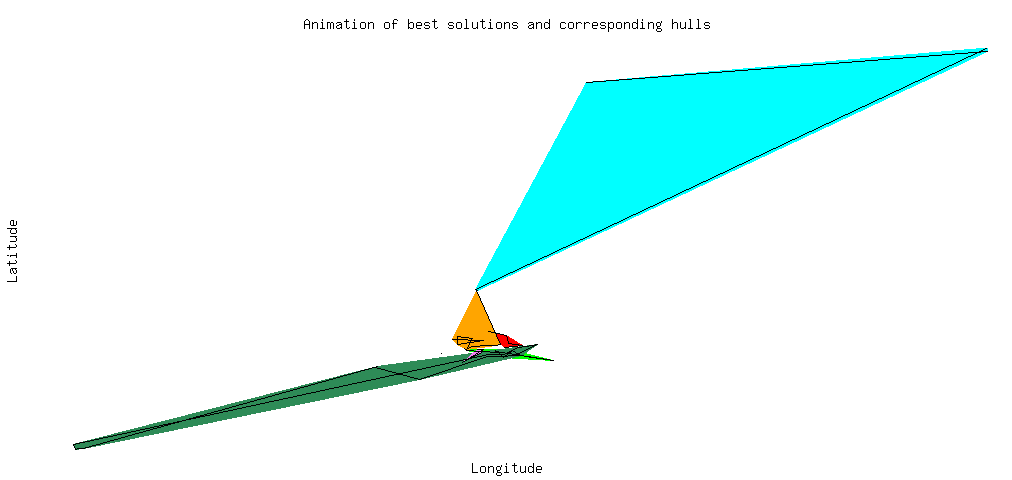 |
Penalty for Lacking Visual Appeal
- Route Median Penalty
- \(d(i,j)\) is the symmetric distance between \(i\) and \(j\)
- Given a route \(R\), a visit \(i\) is a good candidate for the geographical centre of \(R\) if it has a relatively low score: \[V(i,R) = \sum_{j \in R} d(i, j)\]
- The median of route \(R\) is a visit \(C_R \in R\) with the lowest \(V\) score, in other words: \[C_R=\mathop{\arg\,\min}\limits_{i \in R} V(i, R)\]
- Route Median solution penalty is equal to the sum of distances of assigned visits to their route medians
Route Median Penalty in the
Context of LNS...
What will the routes look like?
Route Median Penalty
The Routes
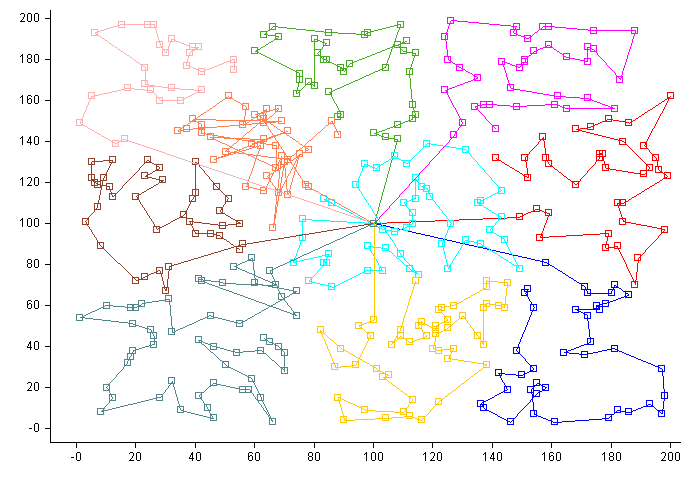
Route Median Penalty
The Hulls
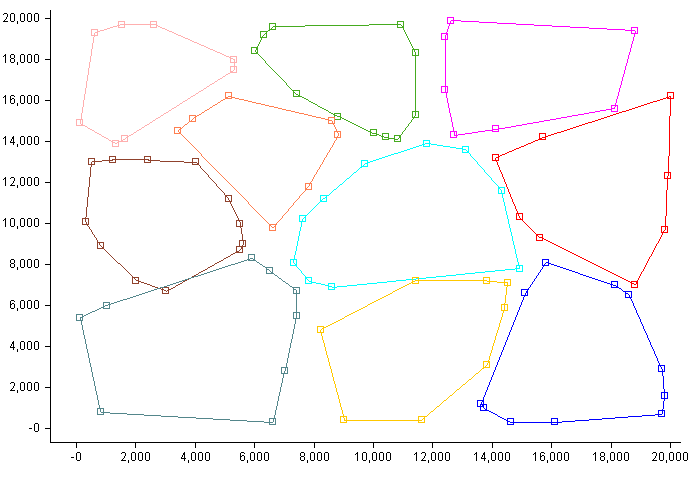
Route Median Penalty in the
The Routes
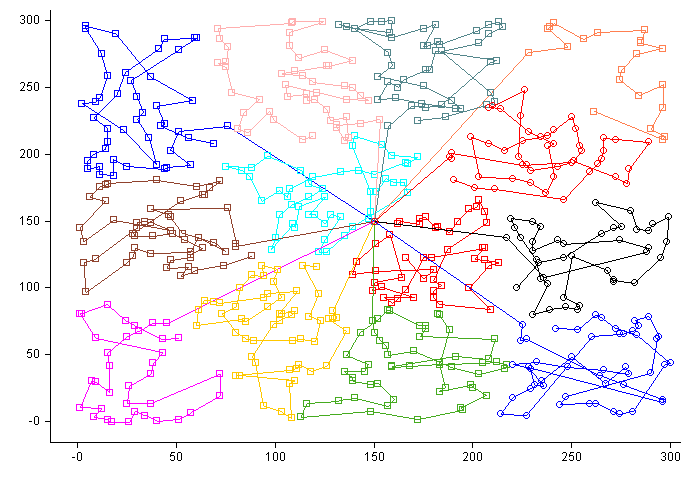
Route Median Penalty in the
The Hulls
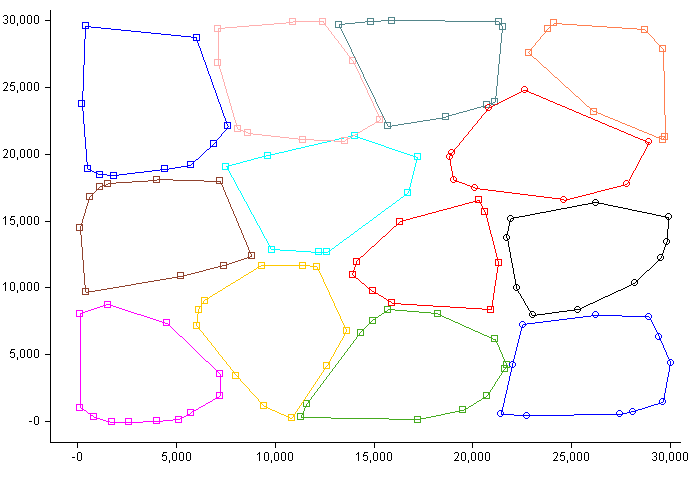
Characterising Shape via Bending Energy
- Assume a route is a contour formed using a linear thin shelled medium
- Where \(K(p)\) is the curvature at point \(p\), the stored energy of a shape is therefore: \[\int |K(p)|^2 \mathrm{d}p\]
- Nontrivial contours with minimum energy are circles
- i.e. are very visually attractive...
Curvature and Polygonal Curves
- One defines the visual curvature at a point as follows: \[K_{N, \Delta S}(p) = \pi \frac{\sum_{i=0}^{N-1} \#[H_{\alpha_i}(S(p))]}{N\Delta S}\]
- \(H_{\alpha_i}\) is a height function rotated by angle \(\alpha_i=\pi\frac{i}{N}\)
- \(\#[.]\) counts extreme points in the neighbourhood \(S(p)\) of size \(\Delta S\).
- In the limiting case this gives us a curvature familiar to differential geometry (Liu etal., IJCV 2008): \[K(p) = \lim_{\Delta S \to 0} |\frac{\Delta\theta(p)}{\Delta S}|\]
Height Functions
- \(H_{\alpha_i}\) is a height function rotated by angle \(\alpha_i=\pi\frac{i}{N}\)
 |
|
Polygonal Curves
- One defines the visual curvature at a point as follows: \[K_{N, \Delta S}(p) = \pi \frac{\sum_{i=0}^{N-1} \#[H_{\alpha_i}(S(p))]}{N\Delta S}\]
- \(H_{\alpha_i}\) is a height function rotated by angle \(\alpha_i=\pi\frac{i}{N}\)
- \(\#[.]\) counts extreme points in the neighbourhood \(S(p)\) of size \(\Delta S\).
- Relating to differential geometry (Liu etal., IJCV 2008): \[ \begin{array}{lcl} K(p) & = & \lim_{\Delta S \to 0} |\frac{\Delta\theta(p)}{\Delta S}| \\ & = & \lim_{\Delta S \to 0} \lim_{N \to \infty} K_{N, \Delta S}(p) \\ \end{array} \]
Polygonal Curves
- One defines the visual curvature at a point as follows: \[K_{N, \Delta S}(p) = \pi \frac{\sum_{i=0}^{N-1} \#[H_{\alpha_i}(S(p))]}{N\Delta S}\]
- \(H_{\alpha_i}\) is a height function rotated by angle \(\alpha_i=\pi\frac{i}{N}\)
- \(\#[.]\) counts extreme points in the neighbourhood \(S(p)\) of size \(\Delta S\).
- In the polygonal case, for small enough \(\Delta S\) visual curvature gives us turn angles -- i.e., where \(\eta(p)\) is the turn angle at vertex \(p\): \[\eta(p) = \Delta S \lim_{N \to \infty} K_{N, \Delta S}(p)\]
- After scaling so that \(\Delta S=1\)
Bending Energy as a Penalty
- Minimise the sum of turn angles.
- Both bending and median penalties can be added to the objective.
- The median penalty guides LNS to produce non-overlapping routes.
- The bending penalty mitigates the tendency of LNS to select for long and messy routes given the median penalty.
No Shape Penalties
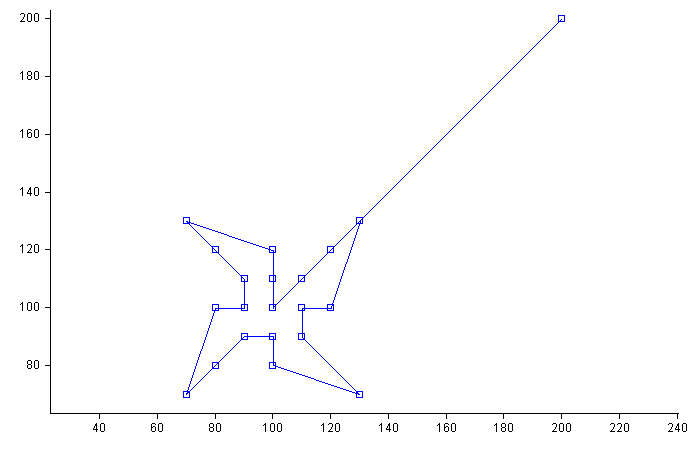 |
LNS traces a short contour |
Minimising Bending Energy
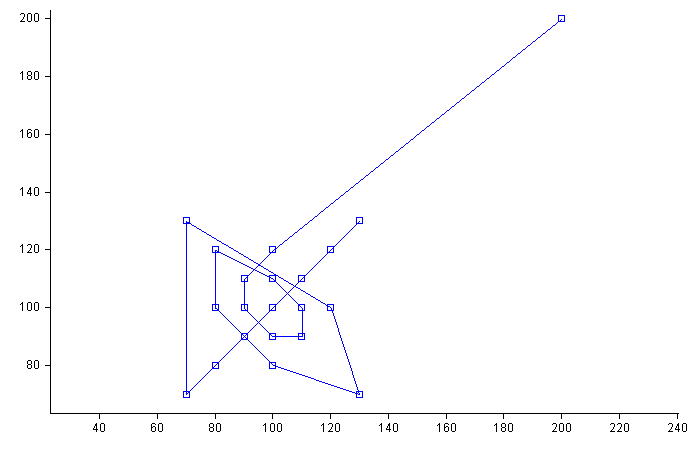 |
LNS traces concentric contours |
Minimising Bending Energy
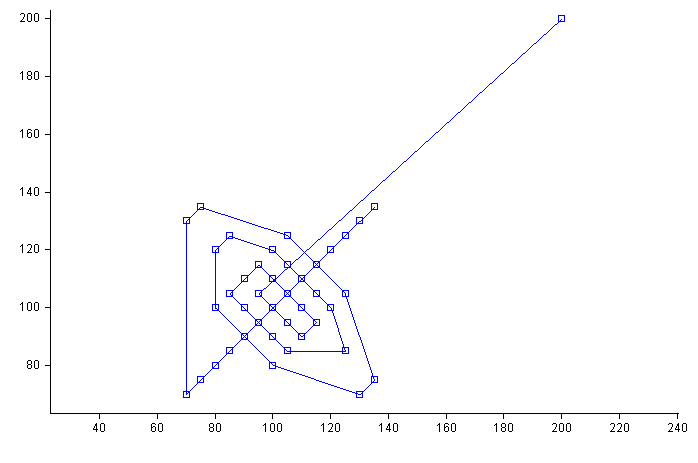 |
Scale Invariant and Invariant to Visit Count |
A Pure Motivation for
Bending Energy:
Malaysian Airlines flight MH370
- Constraints of large-scale aerial visual search:
- Vehicle territories must not overlap
- Vehicles fly in straight lines as much as possible
- Constraints of large-scale aerial visual search:
- Vehicle territories must not overlap
- Vehicles fly in straight lines as much as possible
An Occupancy Grid from AMSA -- April 1 of 2014
- Objective criteria given by an occupancy grid
Optimised Aerial Visual Search
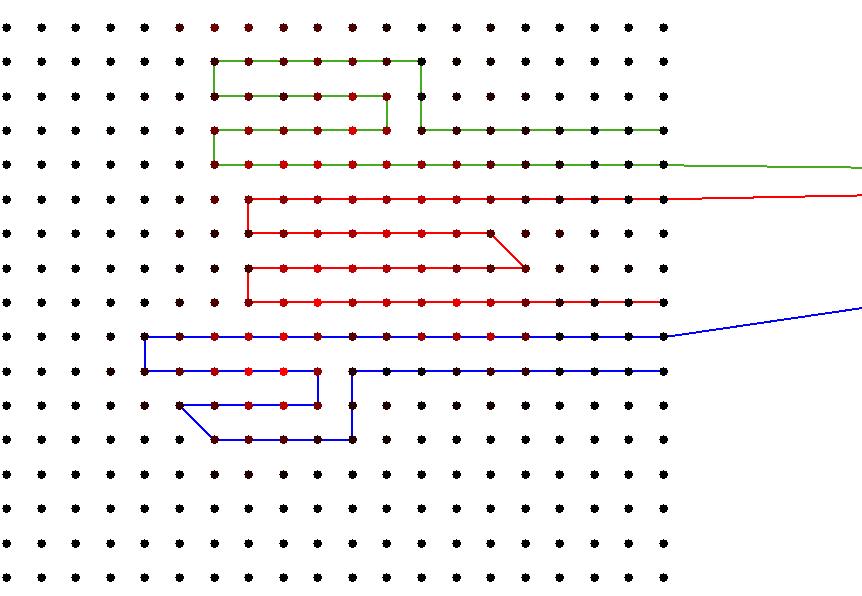
Visual Comparison
| Median | No Median | |
| Bending |  |
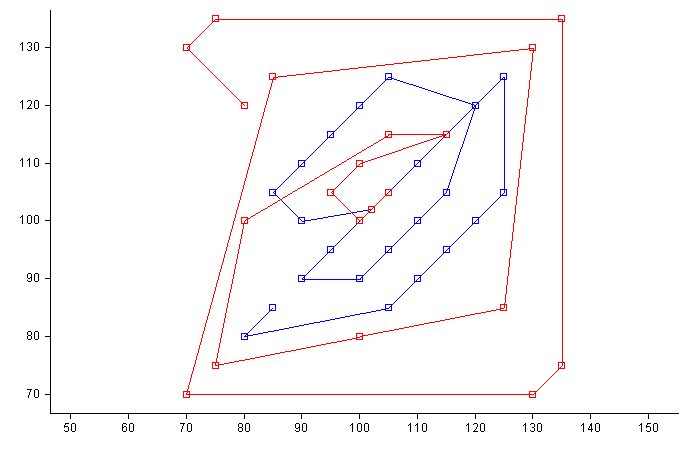 |
| No Bending |  |
 |
Combining Both Penalties
MEDIAN + NO BENDING
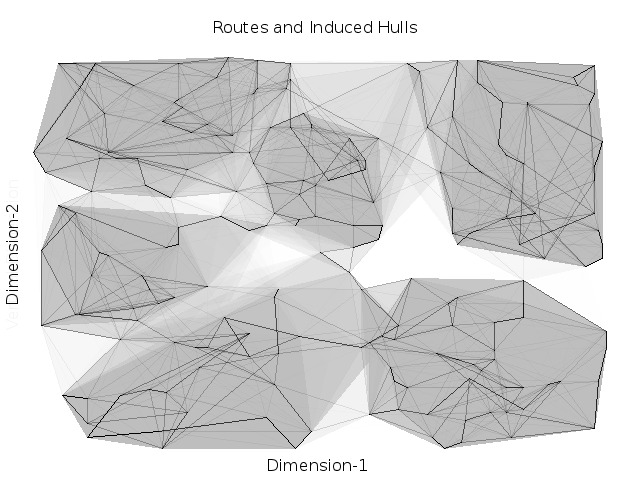 |
Average of LNS Best-Solutions Over 10k Iterations |
Combining Both Penalties
MEDIAN + BENDING
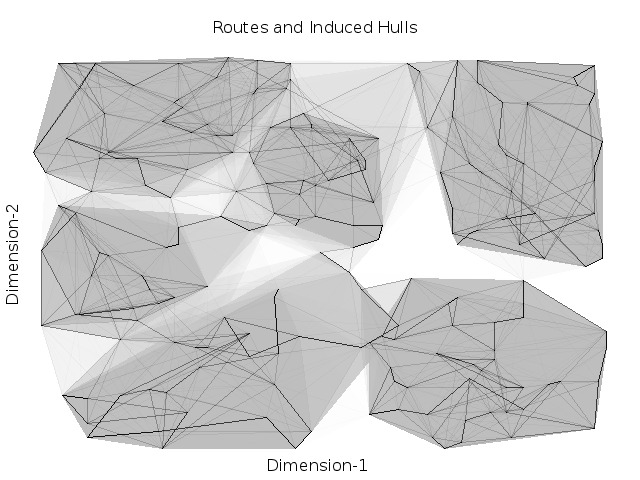 |
Average of LNS Best-Solutions Over 10k Iterations |
Combining Both Penalties
Image Difference
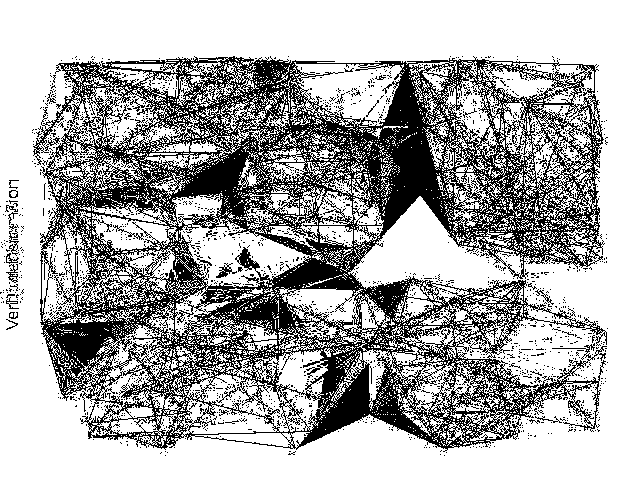 |
Difference: MEDIAN With / Without BENDING |
Combining Both Penalties
Image Difference
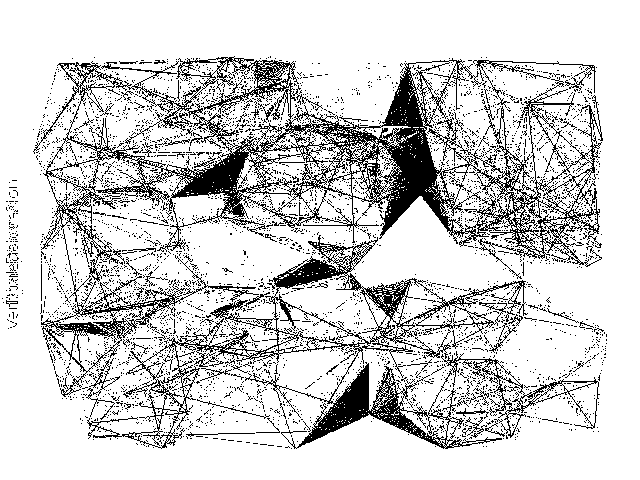 |
Difference: MEDIAN With / Without BENDING |
Combining Both Penalties
Image Difference
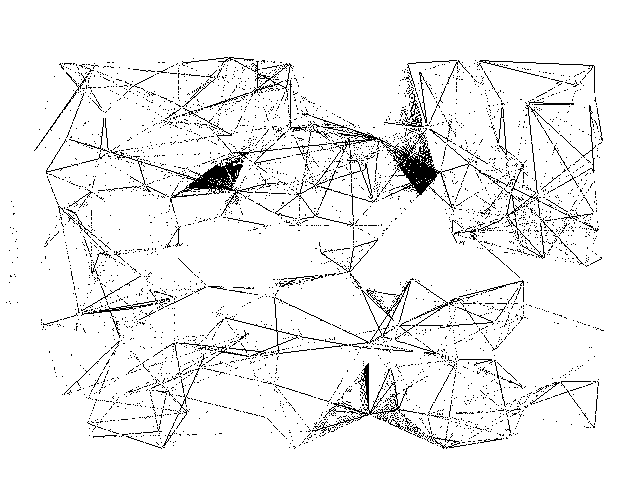 |
Difference: MEDIAN With / Without BENDING |
Combining Both Penalties
Image Difference
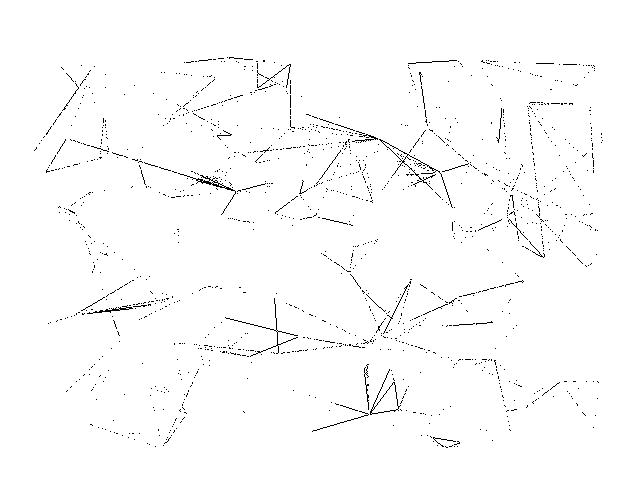 |
Difference: MEDIAN With / Without BENDING |
Experimental Evaluation
- Benchmarks: Solomon and Extended Solomon instances
- \(10^2\) to \(10^3\) customers
- Solomon and Desrosiers, 1988
- Gehring and Homberger, 1999
- \(10^4\) iterations of LNS on each instance
- Forbid dropping of any customers (via very large penalty)
- Relax time windows, by introducing late penalty proportional to earliness/lateness
Overview
- Benchmarks: Solomon and Extended Solomon instances
- \(10^2\) to \(10^3\) customers
- Optimising for the median penalty, baseline comparison:
- Area of intersecting hulls reduced by $43\%$ on average
- Average distance is \(13\%\) greater
- Average distance is on \(9\%\) up using bending energy \(^1\)
- Area of intersecting hulls is marginally greater
- Positive synergies in LNS with both bending energy and median penalties
-
\(^1\) Tang and Miller-Hooks, 2006, observe $7.2\%$ longer routes in practice optimising a median penalty term
Computational Considerations
Median
- Computing a route median for each route encountered
- Median is invariant to route permutations
- For each partial route encountered during an insertion:
- Suppose customers are sorted lexicographically
- Index to cached median calculations of partial route
- Use cache to avoid repeating calculations
- In practice we maintain a route hash
- Maintenance is constant time per insertion/removal
Computational Considerations
pseudo-Median
- Investigated the effect of varying how often route medians are calculated
- During LNS insertion, a new median should be calculated for each route encountered
- We introduce a parameter \(\rho\)
- Probability of adopting partial-route median during insertion
- We investigate the impact of different values of \(\rho\)
CPU and Memory
Varying \(\rho\)
Probability of Compactness
Varying \(\rho\)
Solution Length
Varying \(\rho\)
Graphical Conclusions
| Routes | Route Hulls | |
| Bending and Median | 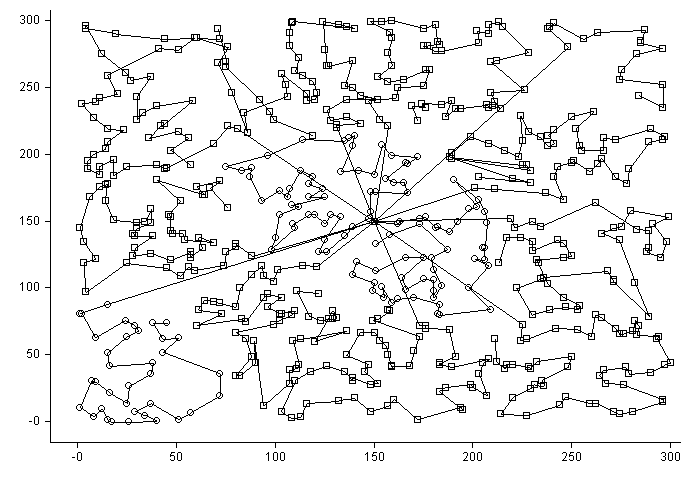 |
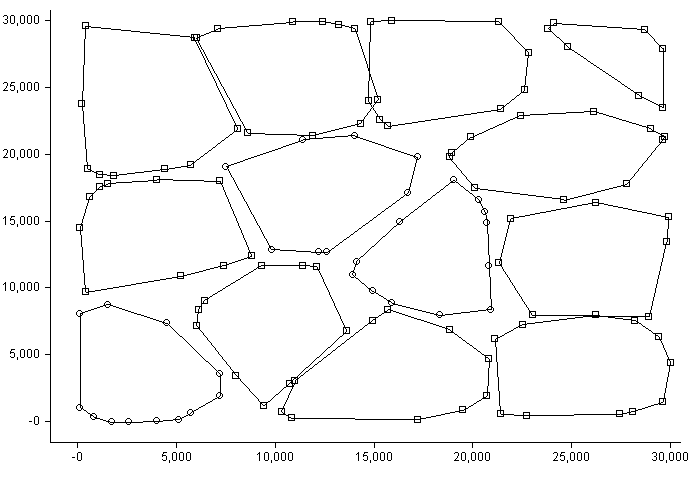 |
| Median | 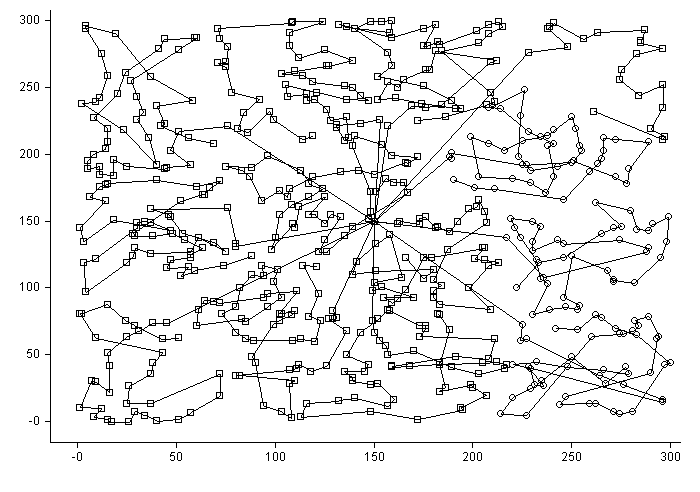 |
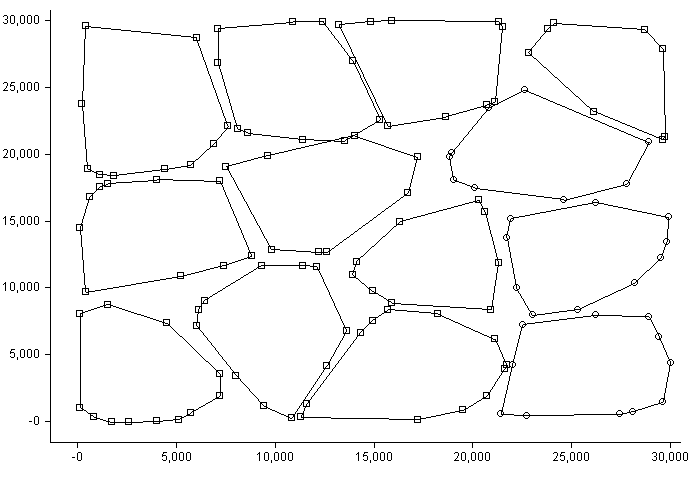 |
Large Neighbourhood Search for Attractive Routes
- Empirically we find:
- Median: provides attractive routes, and combined with
- Bending energy: attractive and short routes
- Direction application of Bending energy for aerial visual search
- Our customers like our visually attractive routes!
Credits


